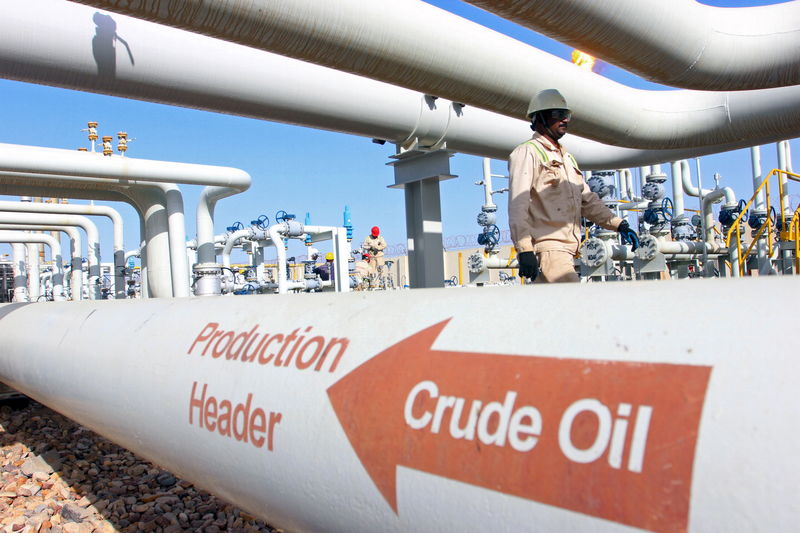Investing.com - Oil prices extended a rally on Tuesday - with Brent up for a fourth straight session and U.S. crude rising for four of the last five days - as expectations that the Federal Reserve will cut rates for the first time in a decade fueled buying interest.
New York-traded West Texas Intermediate crude futures gained 42 cents, or 0.7%, to $57.29 a barrel by 7:43 AM ET (11:43 GMT), while Brent crude futures, the benchmark for oil prices outside the U.S., rose 50 cents, or 0.8%, to $64.12.
Central bank policy easing is expected to put the brakes on a global economic slowdown and underpin demand for oil.
“A Fed rate cut will offer substantial wiggle room for other central banks to lower interest rates and it’s the thought of this concerted policy effort that is providing the springboard for oil prices,” said Stephen Innes, managing partner at Vanguard Markets.
The Bank of Japan and the European Central Bank refrained from adding further stimulus within the last week but both left the door open for further action.
“In addition, the markets are likely positioning in anticipation of significant policy response from the (People's Bank of China), which will be like adding jet fuel to risk markets,” Innes said.
“Also, the resumption of trade talks (between the U.S. and China) is being viewed in a positive light and while the markets remain in ‘hope for the best but prepare for the worst' mode, an agreement on practically anything will be considered a positive sign,” he said.
U.S. Treasury Secretary Steven Mnuchin and Trade Representative Robert Lighthizer are in Shanghai for meetings with their Chinese counterparts, although expectations remain low for any major breakthrough.
Despite the recent rally in crude prices, oil is on track for a monthly loss due to ongoing worries over the global slowdown and its negative impact on demand.
“There remains a nagging feeling that whatever gains oil tacks on could be dwindling by the end of the week, as demand worries continue to tug at the market’s underbelly,” Investing.com senior commodity analyst Barani Krishnan said.
The International Monetary Fund recently cut its expectations for global growth this year and next, citing risks from ongoing trade conflicts, uncertainty surrounding the U.K.’s departure from the European Union and current and potential U.S. economic sanctions.
Japan cut its own growth outlook this week following in the footsteps of ECB President Mario Draghi who said that the euro zone’s economic woes were getting “worse and worse”.
Krishnan also warned that diminishing Iranian tensions were also bearish.
“If tensions over Iran ease further or if Tehran manages to strike a new nuclear deal with the Trump administration to suspend sanctions on its oil, there are concerns that up to 2 million barrels per day of additional crude could enter the market, negating OPEC production cuts and adding to current oversupply,” he said.
Outside of geopolitical considerations, attention will turn later to the American Petroleum Institute’s weekly data of U.S. crude stockpiles, ahead of official government data from the Energy Information Administration on Wednesday.
Consensus is looking for a seventh straight weekly draw of 1.82 million barrels. Last week, the EIA data showed a plunge of nearly 11 million barrels that did little to boost prices. Analysts suggested the draw was distorted by the passing of Hurricane Barry.
In other energy trading, gasoline futures advanced 1.1% to $1.8355 a gallon by 7:44 AM ET (11:44 GMT), while heating oil rose 0.7% to $1.9340 a gallon.
Lastly, natural gas futures traded up 0.8% to $2.132 per million British thermal unit.
